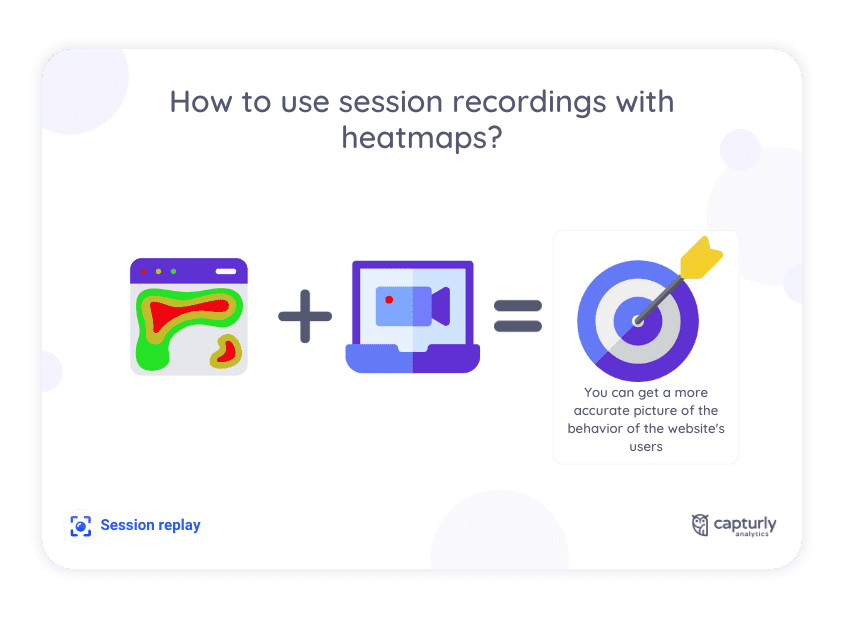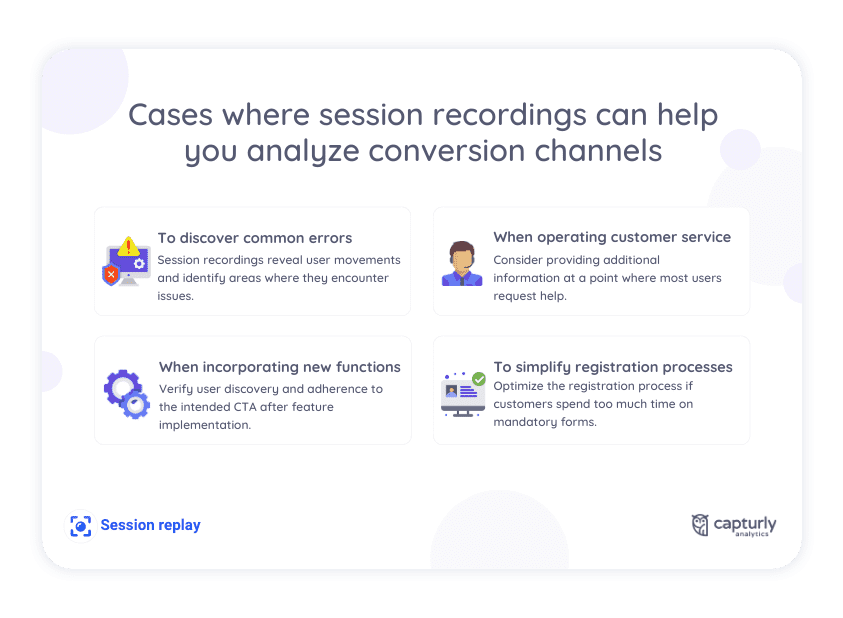Investigating UX problems, optimizing conversion rate, reducing cart abandonment rate, replicating user bugs or issues or validating marketing campaigns can be effective if you combine session recording analysis with other analytics methods, in order to have an attractive and bugless website.
How do you combine traditional analytics with session recordings?
The benefit of combining traditional analytics like Capturly’s Analytics Platform feature with session recordings (or replays) is that you’ll be able to understand the reasons behind the charts and numbers.
Traditional analytics provides you with summarized data about the interactions of all the users. Session recording lets you study further their behavior, one by one. Summarized shortly, traditional analytics are considered to be quantitative methods answering the question ‘What?’, while session recordings are qualitative ones that answer the question ‘Why?’. For example, if you read from the statistics on the analytics platform that the conversion rate is low, it’s useful to watch some session replays to find out what can cause the issue. It can easily happen that there is a technical bug on the website that hinders users from some activities.
By tracking the browsing session of some users, those bugs can be revealed quickly. It’s always good to know the processes behind the bare statistics. In this way, results seem to be more precise and specific. Mixing traditional analytics with qualitative methods allows you to create a more user-friendly solution.

See your visitors’ activity on your website with our free session recording software. Discover rage clicks, u-turns, and JavaScript errors.
How to use session recordings with heatmaps?
The main difference between session recordings and heatmaps is that session recordings give you detailed information about the activity of one user, while heatmaps show you summarized data about the behavior of a group of users. Heatmaps show the most and least attractive spots on a page based on the number of clicks and the length of the scrolls. However, heatmaps do not track the mouse and keyboard movements as session recordings do.
By combining these two methods, you can get a more accurate picture of user behavior on your website. Session recordings help to understand what movements lead the users to the spots they actually click on. This way it’s easier to learn why users leave the website or what stops them from reaching a certain spot. Using these two methods at the same time results in a better user experience that boosts the conversion rate of the website.

How to analyze conversion funnels with the help of session recordings?
Session recordings are good for better understanding the reasons behind the users’ behavior. Let’s see the cases when session recordings can help us analyze conversion funnels.
- Reveal the common bugs and solve them faster. Since session recordings show all the movements that users make on your website, you can easily identify the spots where they get stuck. Some bugs can’t be seen during the website development, just during the actual use.
- It’s also a good idea to take session recordings if you implement a new feature into your website. After implementing the feature check whether users find it or not. Afterwards make sure that they follow the call to action the way you imagined it before.
- If you run a customer support service, analyze the situations when users are likely to utilize that facility. If there is a certain point where the majority of users ask for help, think about inserting some additional information there to ease their job. In this way, you can also reduce the work of your customer support staff.
- Watch the srecordings of registration processes. If you see that customers are likely to spend more time filling out the mandatory form or they quit the registration at some point, try to rearrange the process. Insert some additional information next to some fields that might slow the registration process. If it’s easier to sign up for your website, customers are more likely to do that.
